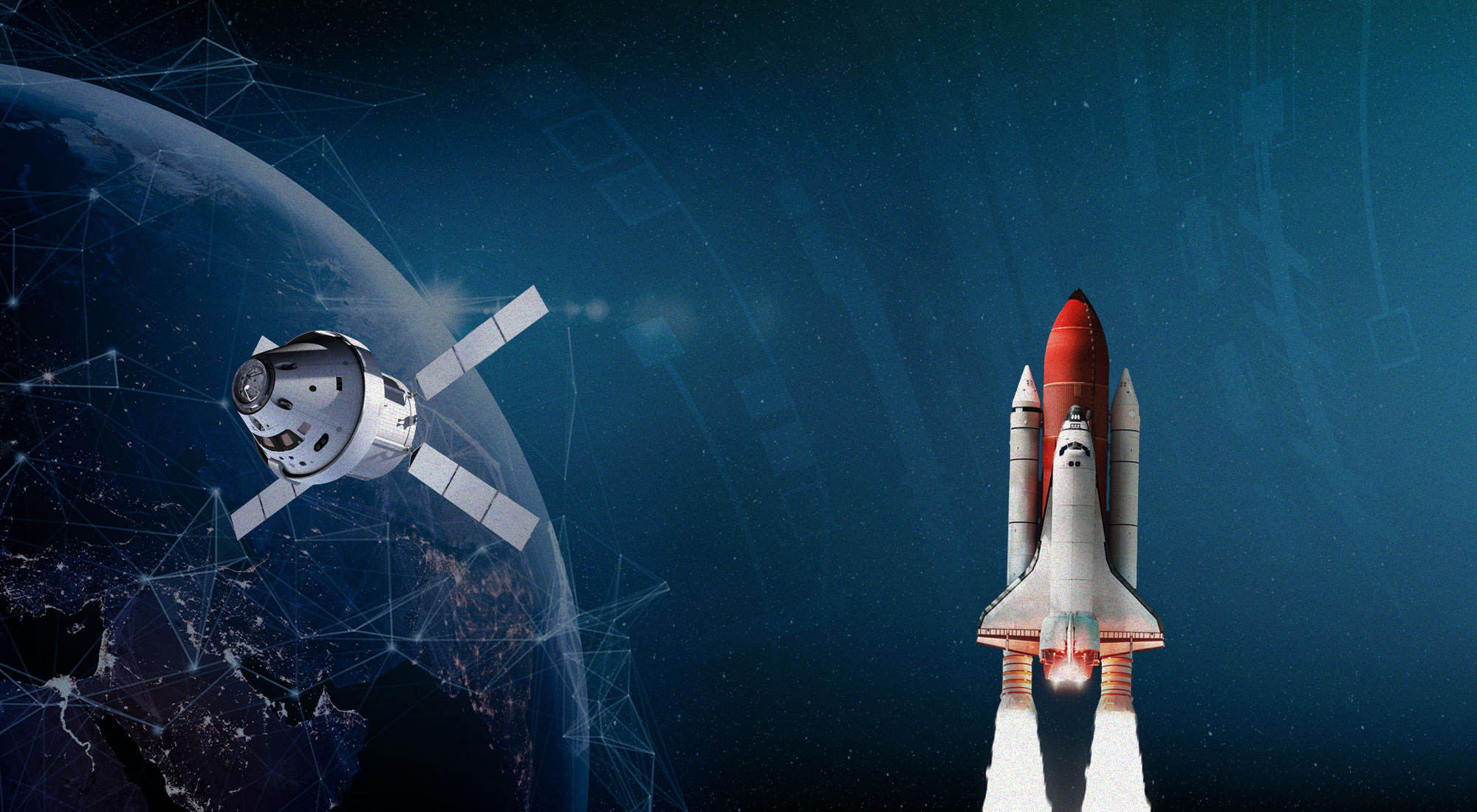The new space race has reignited global competition in multiple areas of space technology, from satellite constellations to space exploration, with profound implications for the Global South, particularly in Latin America. Beyond the traditional rivalry between the United States (U.S.) and China, new opportunities and challenges emerge as Latin American countries increasingly participate in this evolving landscape. This insight analyzes Latin America’s growing role in the new space race, focusing on initiatives and cooperative projects that link regional states with emerging players in the Global South. The first section of the paper provides an overview of the space sector in Latin America. The second section highlights key partnerships and projects between Latin American and Middle Eastern nations, including the GSATCOM Argentine-Turkish joint satellite project, Saudi-Brazilian cooperation on the sustainable use of orbital resources, and the prospects of cooperation between the Emirati EDGE Group and Brazil’s Ministry of Defense on secure communications system. The aim of this research is to provide a nuanced understanding of Latin America’s position and strategic choices in the context of an emerging multipolar space order driven by global power competition and South-South cooperation.
Introduction
Launched in February 2021, the Brazilian satellite Amazonia-1 represented a milestone in Latin America’s space trajectory. Developed in Brazil as the nation’s first Earth observation satellite to monitor deforestation and optimize agricultural management, the project benefited both from Argentina’s leading corporation in technological projects, such as INVAP, which supplied critical components, and the provision of India’s launching services as an example of South-South space collaboration.¹ Another interesting case is Argentina’s SAOCOM satellite constellation, developed by the National Space Activities Commission (CONAE) in partnership with INVAP. These satellites, equipped with advanced L-band synthetic aperture radar (SAR), represent an important advance in Earth observation capabilities, enabling all-weather monitoring of soil moisture, agricultural productivity, and disaster response—critical for addressing climate vulnerabilities. This is an example of how Latin American countries have tried to take advantage of the new international context and expand their autonomy,² trying to boost technological development while simultaneously seeking to remain on the sidelines of the new global competition between great powers.³ In the space field, the new era characterized by renewed strategic competition and the emergence of “new space” presents additional challenges for Latin American nations in which partnerships with Middle Eastern nations are a remarkable alternative source for space cooperation.
Space sector in Latin America: constraints and challenges
Due to its physical characteristics and the dual use of the space technology (especially rocketry), access to outer space has very high costs—both financial and geopolitical—for Latin American nations, whether for the placement of satellites with their own technology or to carry out space exploration projects. The region is not the most advanced in this area. It has no independent access to space; the space exploration projects beyond Earth orbit are nonexistent; and it is one of the regions that invests the least in its space programs. However, development needs have prompted countries to focus their projects on the satellite technology segment, whether in the development of autonomous systems, the search for international collaboration for joint-venture projects, or simply the contracting of technological developments or services provided by third countries. For example, countries such as Bolivia and Venezuela have purchased “turnkey” technological packages—mainly from China—while the cases of Brazil, with the Amazonas-1 example, or Argentina, have opted for the construction of satellites with local technology, as in the case of ARSAT-1, the first telecommunications satellite designed, integrated and tested in Argentina.
However, no Latin American country has placed its national satellites with its own means, while space vector projects have not yet managed to close the technological development cycle (except for suborbital test flights) as in the cases of the Brazilian VLS-1 (Satellite Launch Vehicle) or the Argentinean project Inyector Satelital de Cargas Útiles Livianas (Tronador). Additionally, of the more than 6,700 satellites in orbit, only 1.1% belong to a Latin American country.⁴ In terms of space exploration, the only contributions have been the placement of men in space, such as the first Latin American astronaut, Arnaldo Tamayo Méndez, a Cuban, on the Soviet Union’s Soyuz 38 mission in 1980 and many more afterward. Beyond such presence, the region’s role in space exploration is limited to support stations such as the case of ESA’s Deep Space Stations in Malargüe (Mendoza, Argentina) and China Satellite Launch and Tracking Control General (CLTC) in Bajada del Agrio (Neuquén), both from agreements with Argentina’s National Commission on Space Activities (CONAE).
In budgetary terms, according to the report Global Space Budgets, the countries of Latin America and the Caribbean spent US$164.75 million in 2018, US$170.3 million in 2019 and US$157.6 million in 2020, which represented about 0.22% of global space spending, even less than the African continent.5 What are the causes of this lack of attention to the space dimension evidenced by the lack of public (and private) investment?
The suboptimal development of the space sector is multi-causal, although the presupposed constraint occupies a central place. Guzmán argues that “most Latin American countries have faced many challenges in their pursuit of space technology, as they have historically been fledgling nations, which, over the last 100 years, have faced multiple economic, social and political problems”, so “most of their governments have shunned the development of this technology in favor of investing resources in more pressing matters.”6 In the same vein, Gocłowska-Bolek and Blinder reinforce the notion of budgetary constraint so that resources needed by the space industry “exceed the capabilities of Latin American countries, whose national budgets in science and technology are much smaller compared to those of advanced economies.”7 On the other hand, Durán Juárez emphasizes institutional discontinuity, where, despite initiating projects from rocketry development to training of technical cadres, “a large part of these initiatives was dismantled, privatized, postponed or simply lacked funding for their continuity.”8 The case of Argentina and Brazil in the discontinuous development of space rocketry—for different reasons—is an example of this.
However, the international context and the regulatory barriers of space powers also have an impact. In this sense, we must take into consideration the external restrictions on space rocketry development, technology transfer, and exports of sensitive material from the Missile Technology Control Regime (MTCR) promoted by the U.S. and established by the G7 in 1987 to control exports of materials, facilities, or know-how that could be used for the construction of missile systems of “carrying at least 500 kg of payload with a range of at least 300 km.”9 Such a regime, together with corresponding international pressures, managed to affect missile projects in the developing world that led to the slowdown of the Brazilian VLS-1 or the interruption of the Condor II project. In the Argentine case, it generated the paradox of a more reliable Argentina in the international space order with greater opportunities to achieve space cooperation from developed countries but economically and technologically more dependent on industrially advanced countries “by not promoting its own technological development and disfavoring national industrial competitiveness.”10 In addition, the military—mainly the Air Force—was displaced from the space sector and the Argentine space program was reduced to civil and commercial projects, excluding the dimension of defense and limiting the projects of access to space during the next decades after the deactivation of the Condor II project and the interruption of the project cooperation with Egypt.
Argentina and Brazil joined the MTCR in 1993 and 1995, respectively, signaling their willingness to be responsible members of the established order, while Argentina subsequently also signed the Hague Code of Conduct (HCOC) or International Code of Conduct against Ballistic Missile Proliferation, along with other Latin American countries such as Colombia, Venezuela and Chile. The inclusion—especially of Argentina—in the main counter-proliferation regimes also demonstrates a clear geopolitical choice for the “rules-based order” led by the United States. Beyond joint cooperation projects with the People’s Republic of China (PRC) such as the China-Brazil Earth Resources Satellite (CBERS), the purchase of communication satellites by Bolivia and Venezuela from Beijing, the placement of the CLTC-CONAE Deep Space Station in Neuquen Province, Argentina or the proliferation of Russian GLONASS global positioning system ground stations in Brazil, there is no direct challenge to U.S. supremacy in the region either in space terms or, even less, in sensitive missile technology. However, Latin American countries are looking for options to expand their technological autonomy while trying to move up the space technology ladder with the collaboration of international cooperation.
The region depends mostly on “services provided by extra-regional actors, whether they are state-owned, such as the U.S., Russia, or China; supra-state actors, such as ESA; or private actors, such as SpaceX.”11 Along the same lines, Froehlich, Soria, and de Marchi state that Latin American countries “depend to a large extent on space industries and agencies of countries with a developed space industry, especially in terms of technical assistance”. Thus Latin American countries are forced “to rely heavily on external assistance in terms of satellite implementation, expertise, more advanced technologies, among others.”12 However, such technological dependence generates opportunities to scale regional cooperation or seek partners outside the region, while Latin America attracts interest from space powers that seek to complement their developments or provide products with high technological content, as in the case of China, Russia, Japan or certain European countries such as France.
It is difficult for Latin American countries to compare with the scale of investments needed in relation to developed countries or great powers, although in the framework of the democratization of space, they have ventured into space development to increase their strategic capabilities to improve their security and development. In this sense, both in the case of Argentina and Brazil—the most developed in space matters—and in the rest of the region, states have opted to develop space capabilities individually to provide basic space services, in addition to trying to achieve some autonomy.13 Since space technology is by nature dual, military uses continue to be important in the calculations—especially of the Armed Forces—of decision-makers to invest in the area. Beyond the usefulness of satellite information on meteorological or oceanographic aspects, satellites such as the Brazilian SGDC-1 (military communication), the Amazonia satellite series (earth observation) and CBERS (earth observation carried out together with China) or the Colombian observation nanosatellite FACSAT-2 are some of the cases where the use in defense and security matters is at the forefront of national space priorities.
Latin America-Middle Eastern space cooperation
In the last two decades, the Middle East—and particularly the Gulf—has gained attention as a source of opportunities, projects and investments for Latin America. The space sector is not an exception to this trend, but the initiatives are fairly new. The leading example has been the Argentine-Turkish GSATCOM satellite project, which is a bi-national endeavor that sought to transcend their prior technological dependencies through a pioneering partnership that leverages their respective strengths. Argentina, with a historical shift from a military-oriented space policy toward developmental and revenue-generating goals, and Turkey, driven by the imperative of enhanced communication and intelligence capabilities amid its growing strategic interests in the Middle East and Central Asia, found common ground in addressing an underserved market niche.14 GSATCOM emerged from a concept originally incubated by the Argentine technological company INVAP following a market analysis that identified an opportunity in small, electric-powered geostationary satellites—a niche ripe for innovation. After several rounds of domestic and international partner explorations, the project crystallized in 2019, when INVAP and the Turkish Aerospace Industry (TAI) formalized a joint venture. This collaboration was not only a response to their mutual technological and economic imperatives but also a manifestation of broader strategic objectives aimed at reinforcing national autonomy and competitive positioning in the international telecommunications market. Despite facing considerable financial headwinds, notably, Argentina’s economic challenges exacerbated by a prolonged crisis and the COVID-19 pandemic, the initiative has persisted as a strategically significant endeavor that would be the basis of the Argentine next-generation telecommunications satellite (SG-1),15 and is currently under commercialization by TAI at satellite and defense exhibitions.
More recently, Saudi Arabia and Brazil crossed roads to boost collaboration on peace and sustainable use of space. On the one side, the Brazilian and Saudi Space Agencies signed an agreement to work together on space exploration and peaceful uses of space at the “G-20 Space Economy Leaders Meeting (SELM)” held in Foz do Iguaçu, Brazil, in September 2024,16 while later in November agreed to sign an MoU between Saudi Arabia’s Communications, Space, and Technology Commission (CSTC) and Brazil’s National Telecommunications Agency (Anatel) to “ensure the sustainable and equitable use of orbital resources and leverage modern technologies for space data analysis.”17
Even more concrete, the Emirati EDGE Group is advancing with Brazil’s Ministry of Defense on a broader defense technology cooperation that includes not only the development of drone systems, collaboration in missile development and non-lethal technologies, but also the development of secure communications through an integrated system developed by EDGE and its Brazilian partner, Sistemas Integrados de Alto Teor Tecnológico (SIATT), which brings the EDGE’s KATIM X3M Ultra-Secure Smartphone and Model 9001R Encrypted Gateways and the short- and medium-range IMBEL radio system.18 Even if this system is not space-based, the satcom component is critical as part of the situational awareness goals of the final consumer of the EDGE product, which is the Management and Operational Centre of the Amazon Protection System (CENSIPAM) of the Brazilian Ministry of Defense.
Even if cases of cooperation are rare and most of them are still in the making, the prospects for cooperation are huge, especially in areas where space capabilities and experiences are complementary or where the need for international funding for space projects can match technological needs and commercial opportunities—as is usually the case in countries like Brazil and Argentina, especially in the satellite development sector.
Conclusion
Latin America and the Caribbean is generally a consumer and not a producer of innovation and technological advances. The region does not have many options due to economic constraints and a lack of technical resources to make an autonomous leap into further space, so cooperation with major powers outside the region in terms of know-how, technology, innovations and development remains vital for the growth of the space sector. Despite budgetary limitations, institutional fragmentation, and external regulatory barriers, Latin America has demonstrated resilience by forging innovative partnerships that blend technological ambition and some degree of geopolitical pragmatism. Projects like the Argentine-Turkish GSATCOM satellite—a pioneering venture in electric-powered geostationary satellites—exemplify how regional powers are leveraging collaborative frameworks to reduce dependency on traditional space powers while enhancing indigenous capabilities. Similarly, Saudi-Brazilian agreements on sustainable orbital resource management and the Emirati EDGE Group’s collaboration with Brazil on secure communication systems highlight a shared commitment to advancing dual-use technologies that serve both developmental and defense priorities, a key concern for both sides. These projects are not merely transactional but reflect a deeper recalibration of their strategic calculus, trying to balance autonomy with the need for external technological inputs. Such cooperation mitigates the high costs and geopolitical risks of independent space access, enabling both sides to address pressing needs without overreliance on traditional providers in the Global North but also avoiding over-developing ties with revisionist space powers such as China or Russia. The implications extend beyond technology transfer. This collaboration underscores the Global South’s capacity to drive innovation while navigating the increasing strategic tensions between the U.S. and China in the space race.19 This collaboration offers a blueprint for pragmatic, sovereignty-sensitive engagement in the space domain—a testament to the transformative potential of South-South dialogue in an increasingly contested cosmos.
References
- “Amazonia-1: Uses and Applications,” Instituto Nacional de Pesquisas Espaciais (2021), https://www.gov.br/inpe/pt-br/programas/amazonia1/usos-e-aplicacoes.
- Esteban Actis and Bernabé Malacalza, “Las políticas exteriores de América Latina en tiempos de autonomía líquida,” Nueva Sociedad 291 (2021): 114–126.
- Carlos Fortin, Jorge Heine and Carlos Ominami, (eds.), Latin American Foreign Policies in the New World Order: The Active Non-Alignment Option (London: Anthem Press, 2023).
- UCS Satellite Database, Union of Concerned Scientists (2023), https://www.ucsusa.org/resources/satellite-database.
- “Global Space Budgets – A Country-level Analysis,” Space in Africa, (2021), https://africanews.space/global-space-budgets-a-country-level-analysis/.
- Joseph Guzmán, “Programas espaciales en América Latina: Historia, operaciones actuales y cooperación futura,” Revista Fuerza Aérea-EUA 3, no. 3 (2021): 22–42.
- Joanna Gocłowska-Bolek and Daniel Blinder, “La investigación espacial latinoamericana. Cooperación y desarrollo,” Saber y Tiempo 1, no. 2 (2018): 16–32.
- Citlali Durán Juárez, “Agencia Latinoamericana y Caribeña del Espacio: perspectivas y realidades,” Ucronías 6 (2022): 33–60.
- Missile Technology Control Regime (MTCR), MTCR Guidelines and Annex Handbook (2013), https://ftp.idu.ac.id/wp-content/uploads/ebook/tdg/MILITARY%20PLATFORM%20DESIGN/MISSILE%20TECHNOLOGY%20CONTROL%20REGIME.pdf.
- Daniel Blinder, El proyecto del misil Cóndor II y la política espacial argentina (Buenos Aires: UNPAZ Edita, 2022), 26.
- Ivan Goldman, “La Agencia Latinoamericana y Caribeña del Espacio como instrumento de integración regional e inserción estratégica,” Revista de Investigación en Política Exterior Argentina 1, no. 2 (2021): 41–60.
- Annette Froehlich, Diego Soria and Ewerton de Marchi, Space Supporting Latin America: Latin America’s Emerging Space Middle Powers (Cham: Springer, 2020), 37.
- Bruno Sarli et al., “South American Space Era,” 66th International Astronautical Congress, Jerusalem, 2015, 2.
- Ariel González Levaggi and Daniel Blinder, “High in the sky: Turkish–Argentine South–South space cooperation,” Third World Quarterly 43, no. 1 (2021): 94–113.
- Martin Belvis, “El tercer satélite de Arsat lo hará Invap junto a sus socios turcos,” Generación EZ, March 3, 2022, https://www.rionegro.com.ar/politica/tecnologia/el-tercer-satelite-de-arsat-lo-hara-invap-junto-a-sus-socios-turcos-2178205/.
- “Saudi Arabia And Brazil Sign A Cooperation Agreement For Peaceful Space Exploration Purposes,” Saudi Space Agency, September 12, 2024, https://ssa.gov.sa/en/newsItem/?path=/news/saudi-arabia-and-brazil-sign-a-cooperation-agreement-for-peaceful-space-exploration-purposes/
- “CST Announces Space Sustainability Research Partnership Brazil’s ANATEL at ‘Connecting the World from the Skies Global Forum,’” Saudi Press Agency, 2024, https://spa.gov.sa/en/N2215473.
- “EDGE strengthens partnership with Management and Operational Centre of Amazon Protection System,” Emirates News Agency, April 2, 2025, https://www.wam.ae/article/biz53mt-edge-strengthens-partnership-with-management-and.
- Ana Soliz de Stange, “Latin America and the China-US Space Race,” The Diplomat, September 27, 2024, https://thediplomat.com/2024/09/latin-america-and-the-china-us-space-race/.









